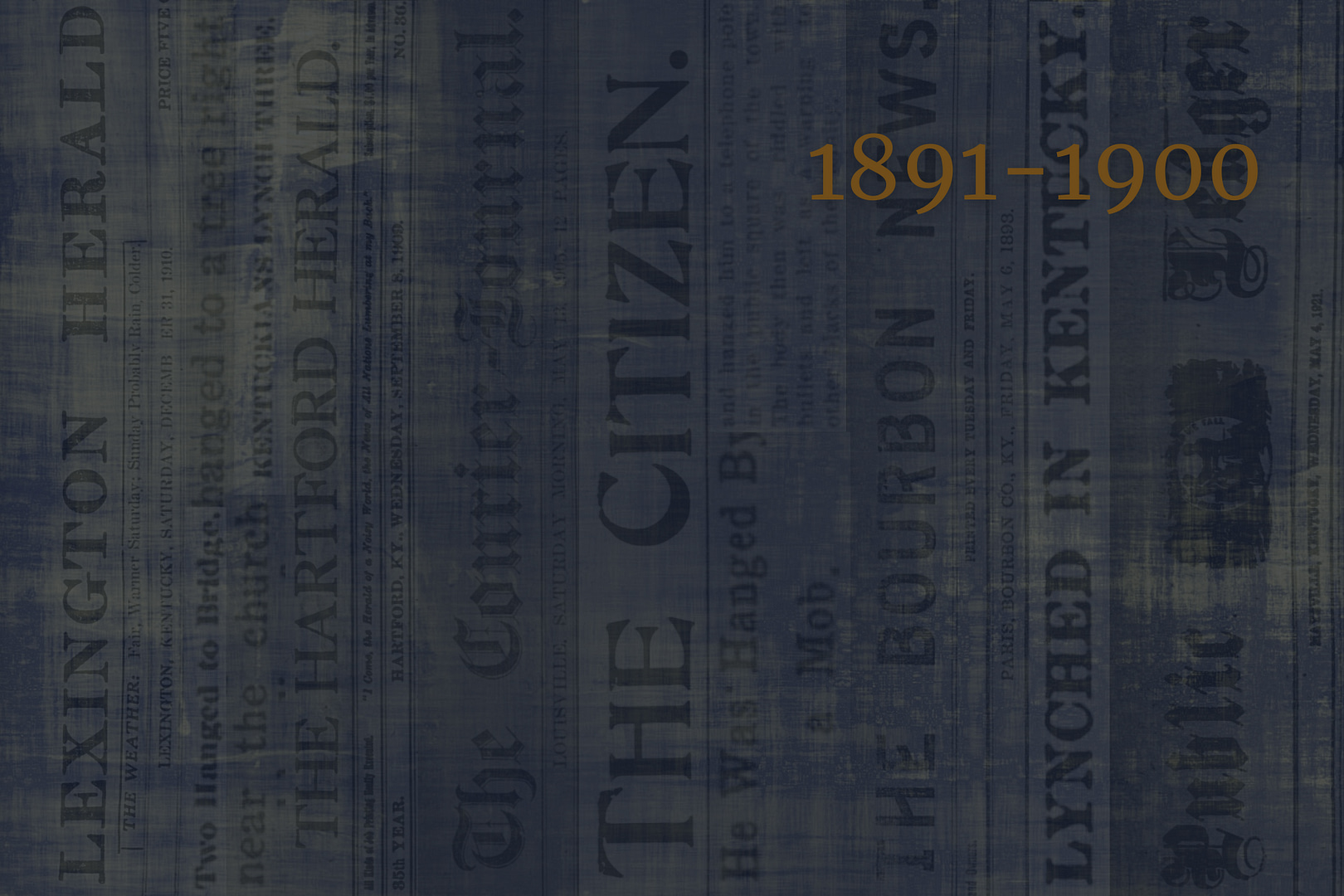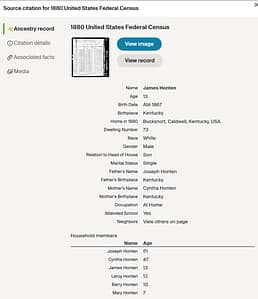
Since Hewlett Howton is one of about 50 white lynching victims in Kentucky, there is considerable biographical information documenting his family, labor, and residences. Hewlett Howton (also known as James Hewlett Howton) was born around 1864 to Joseph (Joe) Howton and Cynthia in Caldwell County, Kentucky. He had three brothers, John, Berry, and Leroy, and one sister, Mary. Joe Howton worked as a farmer, and his personal estate and farm was valued at $800 in 1870 (about $19,000 in 2023). According to the 1880 Census all four children attended school, and James and Leroy could read and write.
On July 8, 1895 around midnight, a group of approximately eight men came to the Howton family farm seeking James Hewlett. Joseph answered the door and demanded to know what they wanted. The mob burst into the house, shooting and mortally wounding Joseph in the process. They then found James Hewlett, forced him into a corner, and shot him. Some newspapers claimed that the mob threatened to kill Berry, the younger son, if he told anyone what happened; other newspapers reported that mob threatened a farm hand. Joseph Howton succumbed to his wounds and died a few days later. He left a will that was processed in November of the same year.
No clear explanation emerged explaining why Joseph and James Hewlett Howton were shot and killed. The Louisville Courier-Journal said that Hewlett Howton was a witness in the robbery trial of William McElroy. The Hopkinsville Kentuckian postulated that the mob was comprised of KKK members, but the newspapers did not explain why the group targeted the Howton family. The San Francisco Call wrote that John Howton was a criminal and shunned by the family. None of these accounts were verified.
Approximately a year later, Jim Russell and Captain Beatty Steffy, two members of the mob, was arrested and tried for the murder of the Howtons. By 1897 both men were imprisoned, but they held influence over “the regulators” or the Ku Klux Klan (sources use both terms), and were involved in the lynching of Ephraim Brinkley (click to view Brinkley’s page) in July of 1897.
Location of the Lynching
References
- U.S. Census Bureau. Ninth Census of the United States, 1870. “Schedule 1. – Inhabitants.” Howton, Hewlett. AncestryLibrary Edition.
- “Hewlett Howton was killed…,” The Courier-Journal, July 10, 1895. Newspapers.com.
- “Yesterday’s Indictments,” The Courier-Journal, September 22, 1894. Newspapers.com.
- “Caldwell Circuit Court,” Hopkinsville Kentuckian, March 3, 1896. Chronicling America: Historic American Newspapers, Library of Congress.
- “Jim Russell Down,” Hopkinsville Kentuckian, March 5, 1897. Chronicling America: Historic American Newspapers, Library of Congress.
- “Eight men went to the house…,” Interior Journal, July 12, 1895. Newspapers.com.
- “Youngest Son Warned,” The Hustler, July 12, 1895. Newspapers.com.
- “Murdered By Fiends, Father and Son Shot to Death by a Mob in Kentucky,” The San Francisco Call, July 10, 1895. Chronicling America: Historic American Newspapers, Library of Congress.
- “Unknwon Murderers,” The Twice-A-Week Messenger, July 13, 1895. Newspapers.com.
- “Ephraim Brinkley Hanged In Broad Daylight In Hopkins County,” Messenger-Inquirer, July 22, 1897. Newspapers.com.
- Kentucky, U.S., Wills and Probate Records, 1774-1989. “J. H. Howton.” AncestryLibrary Edition.
Note: The above links are simply citations for the home website from which the images have been drawn. Following these links may enhance the user’s experience, but it is not necessary. In order to further the long-term preservation of our site, all information in the above links can also be found in the above carousel of images.
Citation
Alfaya, Martin. “Hewlett Horton (also known as James Hewlett Horton).” Documented Biographies. Documenting Racial Violence in Kentucky. May 13, 2023. https://drvk.createuky.net/biographies/1891-1900/hewlett-howton-also-known-as-james-hewlett-howton/










